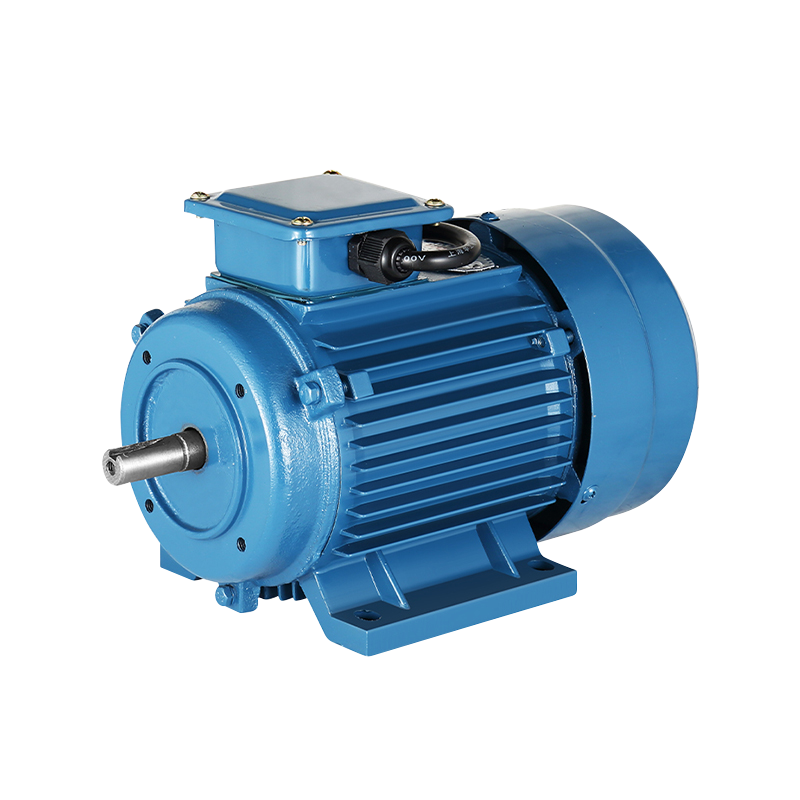Revolutionizing Efficiency with Single-Phase Asynchronous Electric Motor Technology
In the world of electric motor technology, the Single-Phase Asynchronous Electric Motor stands out for its reliability and versatility. This motor type, distinguished by its ability to operate efficiently on single-phase power supplies, is making waves across various industries due to its affordability, simplicity, and effectiveness. As industries seek more efficient and cost-effective solutions for their electrical drives, the Single-Phase Asynchronous Electric Motor is proving to be a valuable asset.
The Single-Phase Asynchronous Electric Motor operates on the principle of electromagnetic induction, similar to its three-phase counterparts but designed specifically for single-phase electrical systems. Unlike three-phase motors, which require a balanced three-phase power supply, the Single-Phase Asynchronous Electric Motor can function on standard single-phase power, which is more common in residential and light commercial applications.
This motor type uses a rotor that turns asynchronously with the stator's rotating magnetic field. The asynchronous nature of the motor means it does not require exact synchronization with the power supply frequency, which simplifies its design and makes it more suitable for a wide range of applications.
The Single-Phase Asynchronous Electric Motor is highly versatile and finds applications in a variety of settings. In residential environments, it is commonly used in appliances such as refrigerators, washing machines, and air conditioners. Its ability to operate efficiently on standard household power makes it ideal for these everyday applications.
In light commercial settings, the motor is used in equipment such as small pumps, fans, and machine tools. Its straightforward design and reliable performance make it a popular choice for applications that do not require the higher power levels or complex control offered by three-phase motors.
The primary advantage of the Single-Phase Asynchronous Electric Motor is its cost-effectiveness. Compared to three-phase motors, single-phase motors are generally less expensive to purchase and install. This affordability makes them an attractive option for applications where budget constraints are a significant consideration.
Economically, the Single-Phase Asynchronous Electric Motor offers several benefits. Its lower initial cost, combined with its simple maintenance requirements, results in a lower total cost of ownership. The motor's design also reduces the need for complex control systems, further decreasing overall expenses.
Operationally, the Single-Phase Asynchronous Electric Motor provides reliable performance with minimal maintenance. Its robust construction allows it to withstand various operational conditions, contributing to its long service life. The motor's simplicity also means fewer components that can fail, reducing the likelihood of breakdowns and the associated repair costs.
One of the significant operational advantages is the motor’s ease of use. Single-phase motors typically require less sophisticated electrical infrastructure compared to three-phase systems, making them more accessible for small-scale applications. This ease of integration is particularly beneficial in residential and small commercial settings where three-phase power may not be available.
Recent developments in Single-Phase Asynchronous Electric Motor technology have introduced several enhancements that improve performance and usability. Modern motors are now equipped with improved materials and design features that enhance efficiency and durability. For instance, advanced rotor and stator designs reduce energy losses and improve overall motor performance.
Energy efficiency is a key focus in the latest single-phase motors. Innovations such as high-efficiency windings and better thermal management have been incorporated to reduce energy consumption and increase operational efficiency. These improvements help users achieve cost savings through reduced energy bills.
Another significant advancement is the integration of smart technology. Some Single-Phase Asynchronous Electric Motors now come with built-in sensors and communication interfaces that enable real-time monitoring and diagnostics. These features facilitate proactive maintenance and allow users to optimize motor performance based on actual operating conditions.
The demand for Single-Phase Asynchronous Electric Motors is steadily increasing as industries and homeowners seek cost-effective and reliable solutions for their electrical drive needs. The trend towards energy efficiency and affordability is driving the adoption of these motors across various sectors.
-
Feedback

 English
English 中文简体
中文简体






